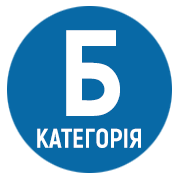Вимоги до оформлення статей
Обсяг публікації – не менше 10 сторінок.
Поля: нижнє, верхнє, ліве, праве – 2 см.
Редактор: МS Word.
Гарнітура: Times New Roman, кегель (розмір) 14, інтервал – 1,5.
Сторінки статті не нумеруються, текст набирається без переносів, шрифт звичайний, абзацний відступ 1,25 см, ілюстративний матеріал подавати в тексті курсивом. Цитати і визначення термінів беруться в лапки, наприклад (“Наратив – це…”). Чітко диференціюються знаки дефіса (-) і тире (–).
Ілюстрації (схеми, графіки, діаграми тощо) нумеруються у межах статті і супроводжуються підмалюнковими підписами. Наприклад: Мал. 1. Розміщення дейктичних опозицій у тривимірному просторі.
Цифровий матеріал може оформлюватись у таблиці, які теж нумеруються в межах статті і супроводжуються назвою над таблицею по центру.
(!) Застосування мовної статистичної моделі ChatGPT та інших інструментів Штучного Інтелекту не відповідає критеріям авторства, оскільки вони не несуть відповідальності за подану працю і не здатні схвалити остаточну версію для публікації.
СТРУКТУРА СТАТТІ:
УДК
Ім’я та прізвище автора (авторів), ORCID ID
Назва статті
Анотація та ключові слова українською мовою
Текст статті
Список використаної літератури
References
Ім’я та прізвище автора (авторів), назва статті, анотація та ключові слова англійською мовою
Інформація про автора (авторів) - науковий ступінь, вчене звання, місце роботи
Текст статті включає такі необхідні елементи (останні з окремого рядка, з абзацним відступом):
- Вступ (розкривається актуальність дослідження; здійснюється постановка проблеми та аналіз попередніх досліджень і публікацій; формулюються мета і завдання).
- Матеріал і методи дослідження (висвітлюється процедура теоретико-методологічного та/або експериментального дослідження).
- Результати та обговорення (викладається основний матеріал так, щоб була зрозумілою суть теоретичного та/або емпіричного дослідження; дискусії щодо висвітленої проблематики).
- Висновки (здійснюється узагальнення результатів, передбачаються перспективи подальших досліджень).
Посилання на джерела в тексті подаються в квадратних дужках [1, c. 12–13]. Посилання на декілька джерел одночасно подається через крапку з комою [1, c. 12–13; 3, с. 34; 5], сторінки вказуються при необхідності.
Список використаних джерел повинен містити не менше 10 позицій мовою оригіналу (оформлюється з урахуванням розробленого в 2015 році Національного стандарту України ДСТУ 8302:2015 «Інформація та документація. Бібліографічне посилання. Загальні положення та правила складання»).
З метою забезпечення підвищення якості наукових цитувань у списку літератури обов’язково зазначати DOI джерела (за його наявності).
На кожне джерело зі списку літератури повинно бути хоча б одне посилання у тексті статті.
В кінці статті розміщується список використаних джерел англійською мовою, оформлений відповідно до міжнародного стандарту бібліографічного опису APA (American Psychological Association). Назви українськомовних джерел подаються транслітерацією, а в квадратних дужках – наводиться переклад.





